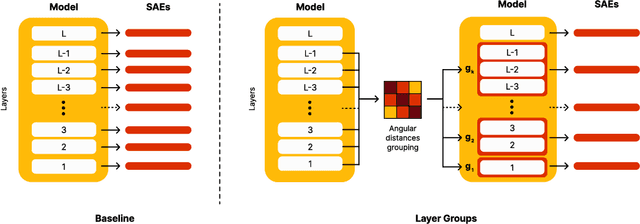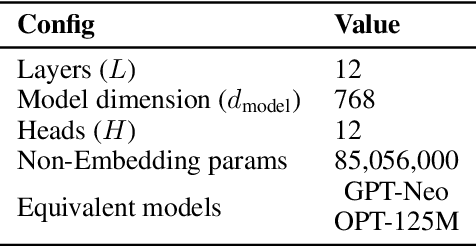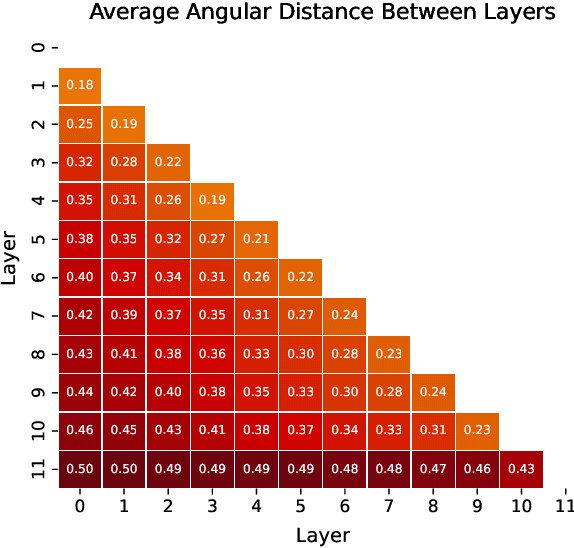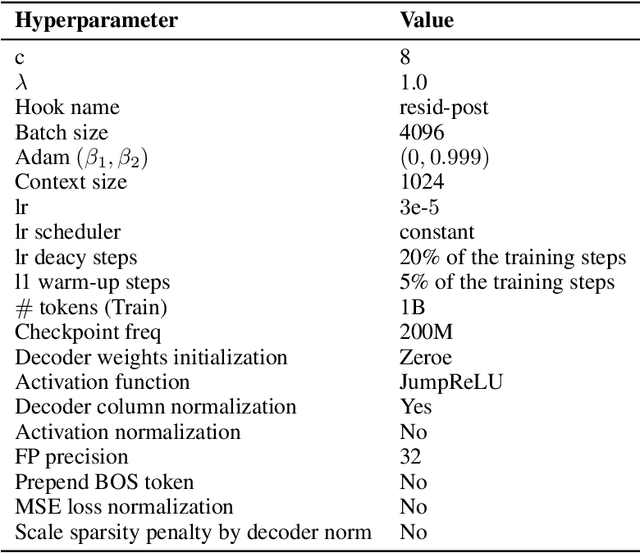Federico Belotti
Efficient Training of Sparse Autoencoders for Large Language Models via Layer Groups
Oct 28, 2024



Abstract:Sparse AutoEnocders (SAEs) have recently been employed as an unsupervised approach for understanding the inner workings of Large Language Models (LLMs). They reconstruct the model's activations with a sparse linear combination of interpretable features. However, training SAEs is computationally intensive, especially as models grow in size and complexity. To address this challenge, we propose a novel training strategy that reduces the number of trained SAEs from one per layer to one for a given group of contiguous layers. Our experimental results on Pythia 160M highlight a speedup of up to 6x without compromising the reconstruction quality and performance on downstream tasks. Therefore, layer clustering presents an efficient approach to train SAEs in modern LLMs.
Evaluating Language Models on Entity Disambiguation in Tables
Aug 12, 2024



Abstract:Tables are crucial containers of information, but understanding their meaning may be challenging. Indeed, recently, there has been a focus on Semantic Table Interpretation (STI), i.e., the task that involves the semantic annotation of tabular data to disambiguate their meaning. Over the years, there has been a surge in interest in data-driven approaches based on deep learning that have increasingly been combined with heuristic-based approaches. In the last period, the advent of Large Language Models (LLMs) has led to a new category of approaches for table annotation. The interest in this research field, characterised by multiple challenges, has led to a proliferation of approaches employing different techniques. However, these approaches have not been consistently evaluated on a common ground, making evaluation and comparison difficult. This work proposes an extensive evaluation of four state-of-the-art (SOTA) approaches - Alligator (formerly s-elBat), Dagobah, TURL, and TableLlama; the first two belong to the family of heuristic-based algorithms, while the others are respectively encoder-only and decoder-only LLMs. The primary objective is to measure the ability of these approaches to solve the entity disambiguation task, with the ultimate aim of charting new research paths in the field.
 Add to Chrome
Add to Chrome Add to Firefox
Add to Firefox Add to Edge
Add to Edge